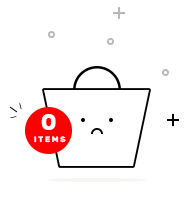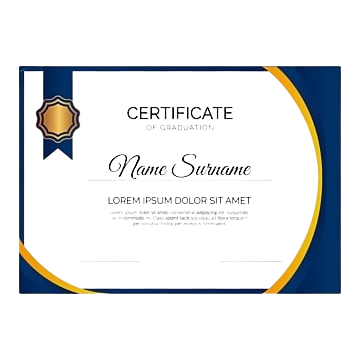Your Shopping Cart

The Certified Scrum Master (CSM) certification from Scrum Alliance is a globally recognized credential designed for professionals who want to lead and manage Agile teams using the Scrum framework. This comprehensive training prepares you to guide teams, manage sprints, and ensure smooth project execution in an Agile environment. With live instructor-led sessions, real-world scenarios, and exam preparation support, you'll be well-equipped to pass the CSM certification exam and excel in your career as a Scrum Master.
Why Enroll in Certified Scrum Master (CSM) Training?
The Certified ScrumMaster (CSM) certification validates a professional's ability to implement Scrum practices and principles to manage and lead Agile teams effectively. This certification demonstrates proficiency in the core concepts of Scrum, such as sprint planning, backlog management, and facilitating communication among team members. Earning this certification showcases your expertise in Agile project management, making you a valuable asset in organizations that use Scrum for software development and project management.
1. Enroll in the CSM course 2. Complete the course and attend all sessions 3. Pass the CSM exam 4. Accept the CSM license agreement
Cert Solution's CSM course stands out with live, instructor-led training by Scrum Alliance-certified Scrum trainers with extensive industry experience. The program offers lifetime access to resources, real-time support, mock exams, and guidance on the exam process. Cert Solution also provides a 100% passing assurance or Money Back Guarantee for dedicated trainees who complete the training.
Cert Solution provides 24/7 support, personalized learning assistance, live instructor-led sessions, and access to their help desk. Trainees also have access to recorded sessions and course materials to accommodate their schedules.
Yes, the CSM certification course at Cert Solution includes hands-on activities, simulations, and real-world projects. Trainees work through practical Scrum scenarios to apply core concepts, ensuring they gain valuable experience while preparing for the exam.
What you will learn:
At the end of this activity, you will be able to-
Topics:
What you will learn
At the end of this activity, you will be able to-
Topics covered
What you will learn
At the end of this activity, you will be able to-
Topics covered
What you will learn
At the end of this activity, you will be able to-
Topics covered
What you will learn
At the end of this activity, you will be able to-
Topics covered
What you will learn
At the end of this activity, you will be able to-
Topics covered
What you will learn
At the end of this activity, you will be able to-
Topics covered
What you will learn
At the end of this activity, you will be able to-
Topics covered
What you will learn
At the end of this activity, you will be able to-
Topics covered
What you will learn
At the end of this activity, you will be able to-
Topics covered
What you will learn
At the end of this activity, you will be able to-
Topics covered
Topics:
What you will learn
At the end of this activity, you will be able to-
Topics covered
What you will learn
At the end of this activity, you will be able to-
Topics covered
What you will learn
At the end of this activity, you will be able to-
Topics covered
we are happy to help you 24*7
The Certified Scrum Master (CSM) course is an entry-level certification that provides a deep understanding of Scrum, its principles, and the role of a Scrum Master. It is designed to help individuals become proficient in Scrum practices and to facilitate the implementation of Agile methodologies within teams
The course is ideal for individuals who are looking to become Scrum Masters, including project managers, developers, product owners, team leads, business analysts, and professionals involved in Agile practices. It’s also suited for anyone interested in understanding Scrum better and leading teams with an Agile mindset.
There are no formal prerequisites to attend the CSM course. However, having a basic understanding of Agile principles or some experience working in an Agile environment may be helpful.
To earn the Certified Scrum Master designation, you must complete the two-day course, followed by passing the CSM exam. The exam consists of 50 multiple-choice questions, and you need to score 74% or higher to pass. Once you pass the exam, you'll receive your Scrum Master certification from Scrum Alliance.
The CSM certification is valid for two years. To renew it, you need to pay a renewal fee to the Scrum Alliance and complete 20 Scrum Education Units (SEUs) during the two-year period. These SEUs can be earned through various learning and practice activities, such as attending Scrum events, workshops, or continuing education courses.
You can attempt the Certified ScrumMaster (CSM) exam multiple times, but after two failed attempts, you must pay a retake fee for additional attempts. You are allowed two free attempts within 90 days of completing the course, and after that, there is a fee for each retake.
Cert Solution provides a complete set of study materials, including access to the Scrum Guide, practice exams, quizzes, and project files for hands-on learning. You will also have access to Scrum Alliance-approved digital content to support your exam preparation.
If you miss a live instructor-led session, you can watch the recorded session through our Learning Management System (LMS) at any time. You can also join the missed session in the next live batch at no additional cost.
To pass the CSM exam, you need to answer 37 out of 50 questions correctly, which means you need a 74% score to pass.
Typically, it takes about 2-6 weeks to get Certified ScrumMaster (CSM) certified, depending on your preparation and availability. However, with dedicated study and following our trainers' guidance, you can achieve certification in as little as one week after completing the course.
To earn the CSM certification, you need to:
The CSM exam is considered moderately easy for those who have attended the course and reviewed the material. The exam has 50 multiple-choice questions, and you need to get at least 37 correct answers (74%) to pass. The content focuses on the fundamentals of Scrum and the role of the Scrum Master.
After completing the CSM course, you will receive an email from Scrum Alliance with a link to take the exam. You must take the exam within 90 days from the date of course completion. You can take the test at any time during this period.
If you do not pass the CSM exam on your first attempt, you can retake it. The first two attempts are free if taken within 90 days of completing the course. After that, there is a fee for additional retakes.
The CSM certification is valid for two years. To renew it, you need to:
